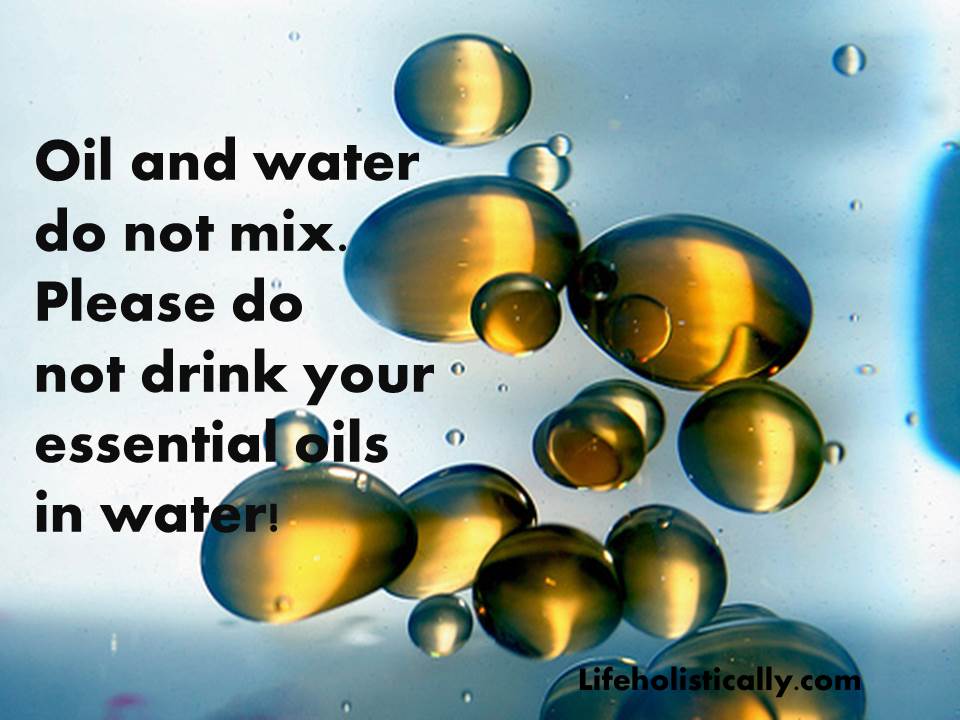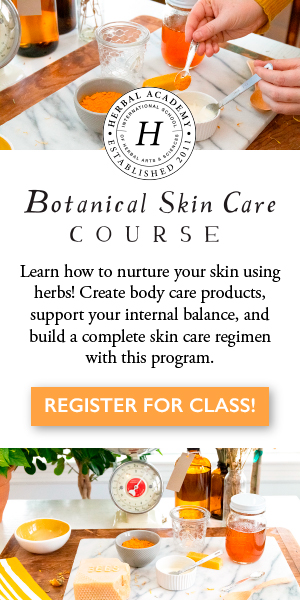Essential Oil Basics-Uncovering Myths Versus Facts. You will be able to find a plethora of articles on the internet regarding essential oils, consequently, there are many myths surrounding them. This article will speak to some of those and provide links when appropriate for further reading.
The widespread marketing of two popular brands of essential oils has introduced many people to these powerful tools for health which is a real blessing. With it comes a few concerns. The first being the unsafe recommendations for use that is seen on blogs, Pinterest, as well as Facebook pages. Essential oils are not to be used carelessly, and misuse can lead to injury. The second is sustainability. So many are of the vein of ‘buy all of the oils’, and that can be really problematic for the future of our precious oils.
Just as you would (or should) exercise caution and research when using pharmaceuticals, you should practice the same careful research when using essential oils. Essential oils are profoundly powerful, which makes them capable of powerful healing, but also injury when used improperly. Overuse and misuse can and does lead to injury. Many have jumped in with both feet without fully exhausting the scientific research (not biased blog posts), then only after beginning their journey find out what they thought was true may not be accurate at all.
Believe what you like, but do not believe everything without questioning it. –Pauline Baynes
So what are essential oils???
Very briefly, essential oils are derived from the various parts of a plant (leaves, stems, flowers, bark, and roots), most often by steam distillation. Essential oils are the true essence of the plant (not the lifeblood of the plant) and are highly concentrated extracts. The chemical composition and aroma of essential oils provide many therapeutic benefits. Most benefits are achieved through methods including inhalation and application of the diluted oil to the skin, but also internally for those trained in aromatic medicine.
Essential oils are not the same as perfume or fragrance oils. Perfume oils are artificially created fragrances and contain artificial substances that do not contain any therapeutic benefit like essential oils do.
Essential oil dilution
Essential oils are very concentrated extracts, much more concentrated than the plant material that it is derived from. Since they are so concentrated, they need to be diluted before they are safe to apply to the skin.
When used undiluted or what some call “neat” there are two risks involved:
1-Irritation which is a direct result of contact with a material and is localized. Healing occurs once the material is removed. Removal is best with a carrier oil (almond, jojoba, etc.) or milk. Follow up with warm soapy water, then add more carrier oil if needed. Healing may not occur immediately, but you should see and feel improvement after proper removal.
2-Sensitization which is a systemic response involving the immune system. According to Dorene Petersen, president of the American College of Healthcare Sciences (ACHS):
“Sensitization occurs once the offending substance has penetrated the skin, been picked up by proteins in the skin, and mediated by the IgE response that produces histamine and other irritants” [1].
This is an allergic reaction. Some oils are more likely than others to elicit this sensitization response, such as lemongrass and cinnamon bark….but it can happen even with oils that some consider gentler oils such as lavender and peppermint. Once this immune system response is triggered, that may mean you can never use that oil again. Never! Compare this to a nut allergy. Not worth the risk!
Please do not subscribe to the “detoxing” explanation where skin irritation is concerned, this is simply not true. If you get a rash or a burn from putting something on your skin is it because it is irritating your skin. Unfortunately, the detox reaction is still being shared as a viable explanation for a rash, and innocent people are being injured. Sometimes by applying more essential oils to the irritated area. Please hear me when I say, skin irritation that can result from essential oils is NOT a detox reaction at all. There is good news in all of this though, and that is when you properly dilute your essential oils, the risk of any irritation is greatly reduced.
Check here for a detailed explanation on this topic from my friend and colleague Liz Fulcher, owner of the Aromatic Wisdom Institute.
Oil and Water
Essential oils are not water soluble. Oil and water do not mix/blend. They need a disbursing agent before adding to your bath water (carrier oil); Epsom salts alone is not enough.
Please do not add essential oils to a glass of water and drink it.
When you add a drop of oil to a glass of water it doesn’t mix with the water. The risks are not worth the practice. Oral dosing may interfere with medication or aggravate other medical conditions. Please refer to the 2014 book, Essential Oil 2e by Robert Tisserand and Robert Young to learn which essential oils carry the most risk internally when taking daily medication.
You may hear something like “our oils are pure therapeutic grade and are safe for internal use” or “certain oils are GRAS” (generally recognized as safe for consumption), but this applies to consuming in food (food additives); not in water. Follow the link here for an informative article by my friend and colleague, The English Aromatherapist about what GRAS really means.
Essential oils can be safe for internal use under certain circumstances when under the care of a professional; someone who has been trained, ultimately much more than the basic 200 hour foundation training, and has to understand how these oils react inside the body, if it is necessary for your condition, and most of all if it is safe and indicated for you and your situation (medication, medical conditions, allergies, etc.). Look for someone such as myself who has been trained in aromatic medicine. Not all aromatherapists have this level of training.
More on Internal Use…
Internal use is not meant to be an everyday practice. It is not to lose weight, ease indigestion, or to be used as a preventative measure to maintain health. That is where healthy eating, exercise, sleep, vitamins, and minerals come into play when you are deficient. Essential oils have no “nutritional value”; another myth. Read more on these topics here and here.
Inhalation
By far the most common method for using essential oils is via inhalation.
Inhalation is THE QUICKEST route to the bloodstream. You can achieve this by using an aromastick, using a diffuser, using a steam bowl, or spritzing into the air to name a few.
Topical Use
When used topically (on the skin), in a suitable dilution, essential oils have a multitude of applications for health, beauty, and well-being. Methods include massage, skin care, and first aid remedies. Essential oils can be added to many personal care products. Applying to the skin also induces inhalation, therefore benefiting multiple systems of the body at the same time.
There are a number of oils that cause photosensitivity or phototoxicity. This can occur when certain essential oil constituents react when exposed to ultraviolet light. This includes the sun as well as tanning beds. Inflammation, blistering, and burning of the skin are possible. These particular oils can be used on the skin, but use caution. It is advised to not go out into the sun or lie in a tanning bed for 12-24 hours after exposure to the specific essential oils. Just to be clear, this applies to the specific areas of skin that have been exposed to the oil, not your body as a whole.
Here is a list of oils that should be used topically with caution, and their maximum use levels when blended according to IFRA standards [2]:
Angelica Root Angelica archangelica 0.8%
Bergamot Citrus bergamia 0.4%
Bitter Orange (Cold/Expeller Pressed) Citrus aurantium 1.25%
Cumin Cuminum cyminum 0.4%
Grapefruit (expressed) Citrus paradisi 4.0%
Lemon (Cold/Expeller Pressed) Citrus limon 2.0%
Lime (Cold/Expeller Pressed) Citrus aurantifolia 0.7%
Mandarin Leaf Citrus reticulate 0.17%
Rue Ruta graveolens 0.15%
Taget Tagetes minuta 0.01%
Always use extreme caution when using any of these oils topically. Bergamot is by far the oil with the highest risk, and it is possible to have a reaction within up to 12 hours after application.
It can be assumed that if someone is taking moderate amounts of a phototoxic oil internally that a phototoxic reaction can still occur. If you use any of these oils, utilize caution.
“Therapeutic Grade”
“The term therapeutic grade provides marketing weight rather than signifying that the oils meet a regulated quality standard”. (Essential Oil University EOU) Essential Oil University a helpful website and Facebook page unaffiliated with any oil company and is dedicated to busting essential oil myths like this one.
The author of the page, Dr. Robert Pappas, explains:
“There seems to be a misconception that there is some kind of independent body that certifies oils as therapeutic grade, but to this date, there is no such body, at least not one that is widely recognized. Does this mean there is no such thing as therapeutic-grade? No, but just realize that any therapeutic-grade standard out there right now is an internally derived company standard. Now this standard may be an overall great standard and perfectly acceptable to me or any other analyst or aromatherapist out there but it just needs to be noted that it is not an independent standard” [3].
Basically, any company can put whatever they want to on a label…..any company. So do your due diligence and do your own research. At the risk of repeating information; please do not use biased blogs for your research. There are a couple companies that state they have the “only” pure oil. Please know that this is simply not the case. There are a number of companies that I trust wholeheartedly to provide me and my family with only the best on the market.
The important thing to remember is there is more than one company that sells high-quality essential oils, at a reasonable price. The best ones are happy to provide you with what is called their GC/MS testing for each batch, and the results are posted for public viewing on their website. For all you techies out there; here is a great resource to understand what GC/MS means.
All aromatherapists, vintage or up and coming, as well as other pioneers in the field of aromatherapy, can agree on one thing; safety is our #1 goal. When it comes to conventional medicine and natural remedies: first, do no harm. Our 2nd goal is to continue to change the lives of our clients in helpful, healthy ways. Essential oils should not be feared they should be respected and used properly to ensure the safety of the individuals using them.

References
[1] American College of Healthcare Sciences, (2012) Aroma 101
[2] IFRA standards. Retrieved from http://www.ifraorg.org/en-us/standards-library/s/phototoxicity#.V9VaSpMrJn4,
This article touches on the basics of safety and the myths in cyberspace. Follow some of the links below for more:
Why Essential Oils Don’t Always Work
Essential Oils and Our Microbiome…AKA Our Gut Bugs
Aromatic Medicine VS Taking Essential Oils Internally
Fennel Essential Oil, Does It Increase Mothers Milk
What is an Adverse Reaction to an Essential OIl
Please note that I am not a medical practitioner. The content of this website is provided for general informational purposes only and is not intended as, nor should it be considered a substitute for, professional medical advice. Do not use the information on this website for diagnosing or treating any medical or health condition. If you have or suspect you have a medical problem, promptly contact your professional healthcare provider. By using this website, you assume full responsibility and liability for your own actions.
BEFORE YOU GO! Remember to sign up for my FREE Facebook group! Hang out with me and THOUSANDS of other Essential Oil lovers looking to learn, click on to join Real Essential Oil Education Group!
Check out my FREE offer below!






